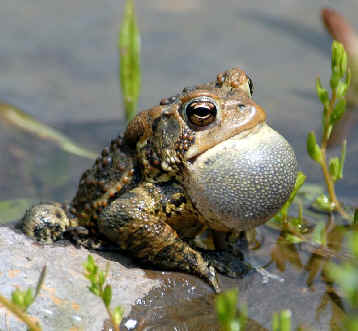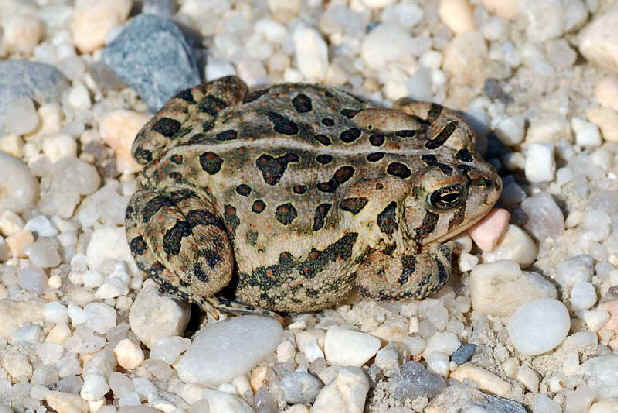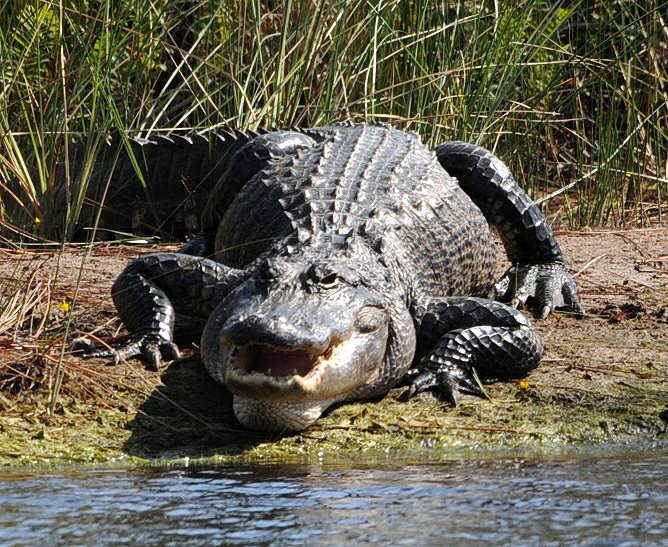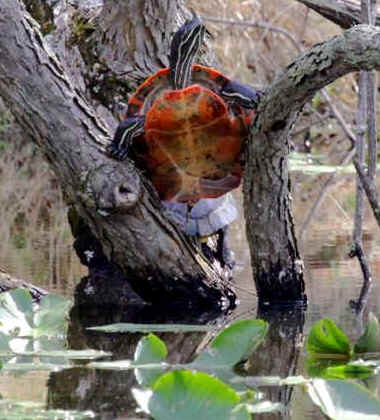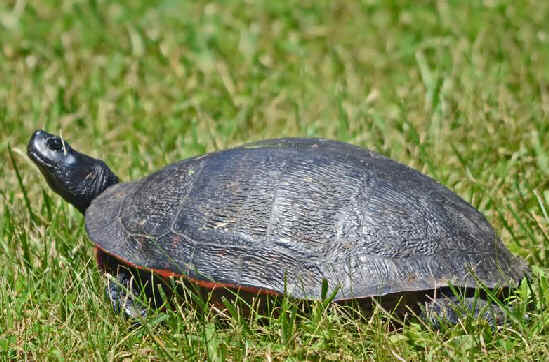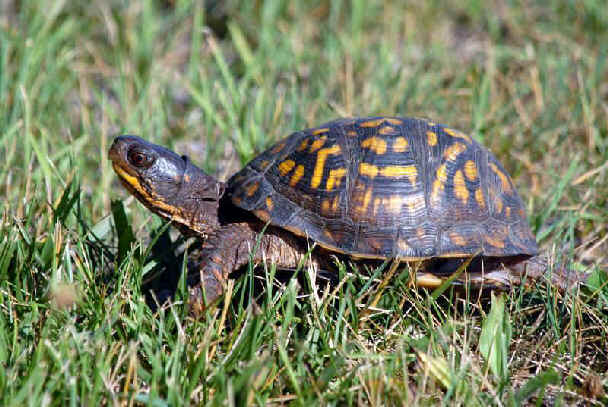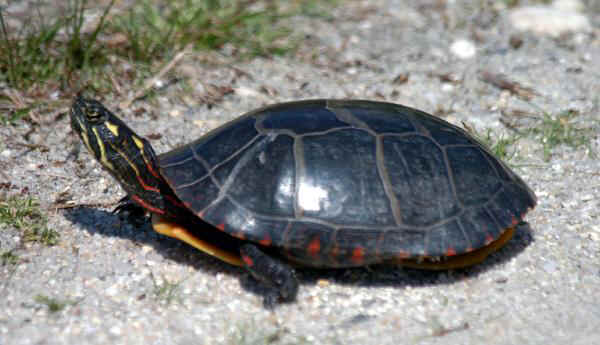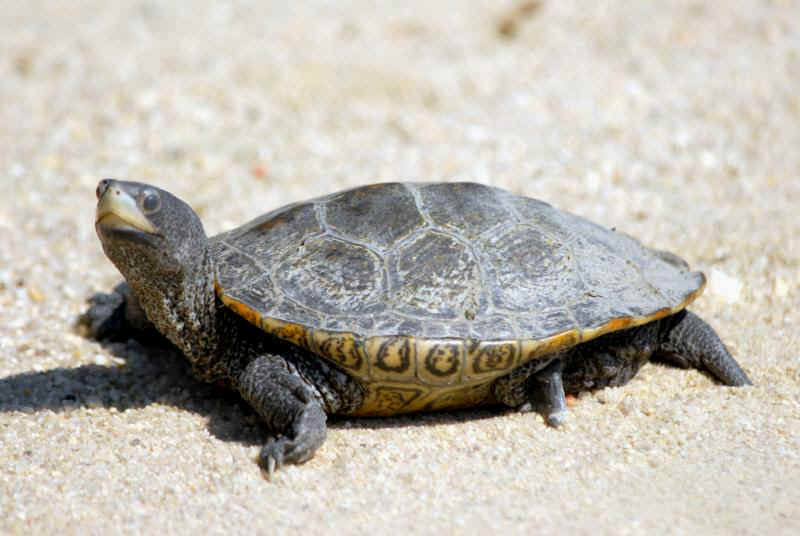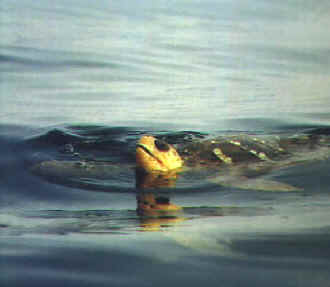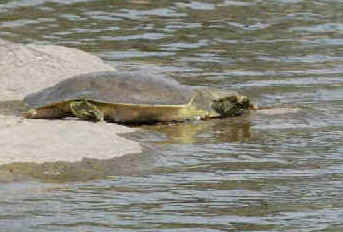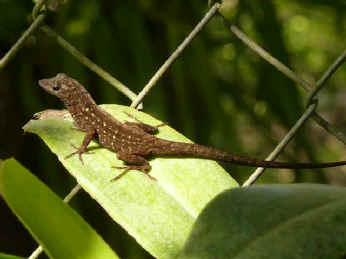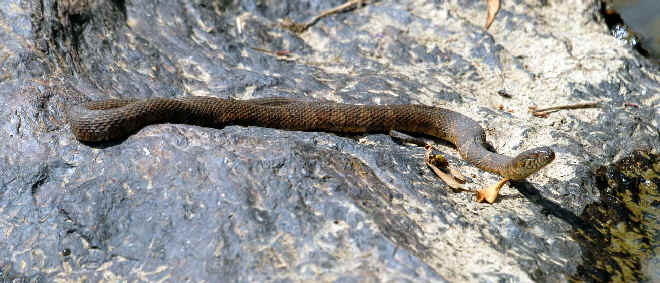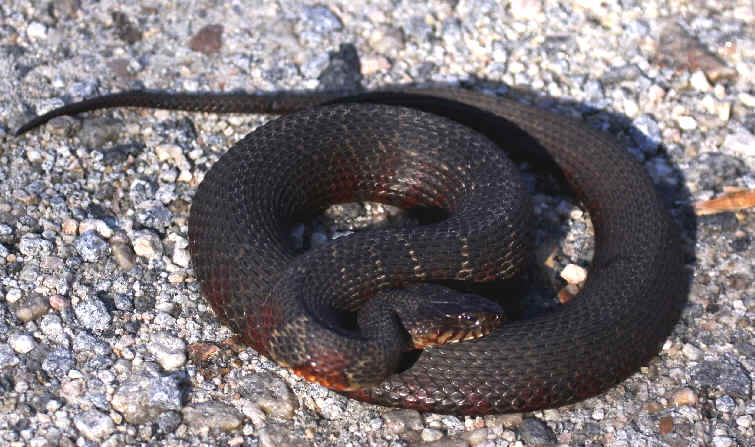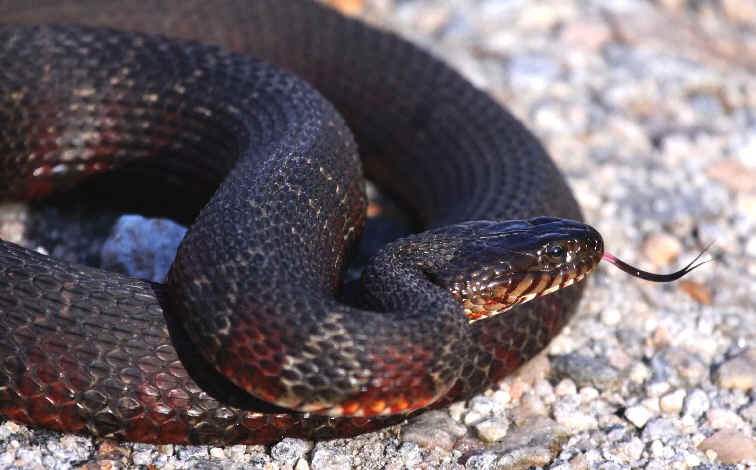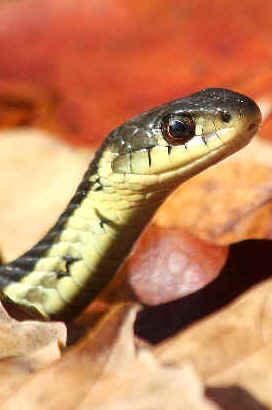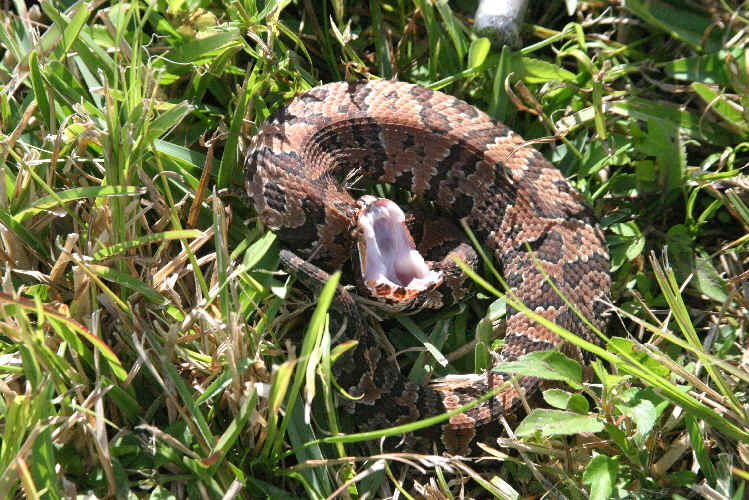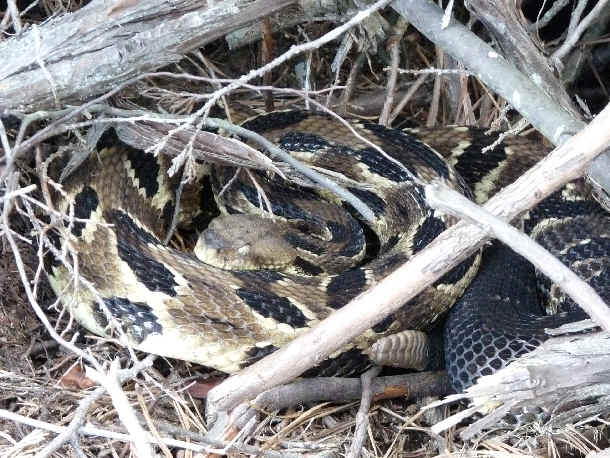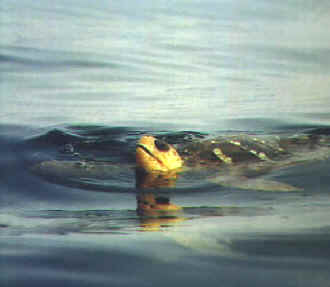 Amphibians
Amphibians
and Reptiles
of
Eastern
North America
Noting those during
Focus On Nature Tours
with an (*)
including:
Salamanders
Toads & Frogs (seen or heard)
Turtles
Skinks, Anoles, and other Lizards
Snakes
A list of eastern North American
Amphibians and Reptiles
compiled by Armas Hill
UPPER RIGHT PHOTO: a LOGGERHEAD SEA TURTLE photographed off the North Carolina
seacoast
(Photo by Alan Brady)
Codes:
DE:
occurs in Delaware
FL: occurs in Florida
MA: occurs in Massachusetts
MD: occurs in Maryland
NC: occurs in North Carolina
NJ: occurs in New Jersey
PA: occurs in Pennsylvania
SC: occurs in South Carolina
VA: occurs in Virginia
SPECIES CLASSIFIED AS GLOBALLY THREATENED:
(t1): critically endangered
(t2): endangered
(t3): threatened
(nt): a near-threatened species globally
(ph): species with a photo in the FONT website
Excellent recordings of the sounds of frogs and toads are in the audio CD of "The
Calls of Frogs and Toads", by Lang Elliot, 2004.
In this list, numbers noted as (LE:xx) refer to
that of the particular frog or toad in the CD.
Recordings in the disk referred to here were by Lang, Elliott, Carl Gerhardt,
David Lee, Paul Moler, Donald Borror, and Bill Turcotte.
Links to Groupings in this List:
AMPHIBIANS
Frogs & Toads Salamanders
REPTILES
Crocodile & Alligator
Turtles Lizards
Snakes
Other Links:
Upcoming FONT Birding & Nature Tours in North America
(including North Carolina, Delaware, Maryland & Virginia)
Upcoming FONT Tours Elsewhere
Lists & Photo Galleries of: Birds
of North America, in 6 parts
Mammals of Eastern North America
Butterflies & Moths of Eastern North America
Dragonflies & Damselflies of Eastern North
America
Wildflowers and Other Plants of Eastern North America
Other Photo Galleries & Lists of Amphibians & Reptiles
A
Directory of Photos in this Website

Amphibians:
FROGS & TOADS
Family RANIDAE:
TRUE FROGS
- Green Frog (ph) (*) ______
(LE:3) NC SC PA Size:
grows up to 2 to
3.5 inches
Rana clamitans melanota Northern Green Frog
______ DE MD NJ VA
Rana clamitans clamitans Bronze Frog ______ FL
The Green Frog is primarily aquatic in its habits. It can be abundant
throughout eastern North America along the edges of ponds, lakes, streams,
and other permanent bodies of water.
When approached, the Green Frog leaps from the shoreline and squeaks an
alarm note before hitting the water.
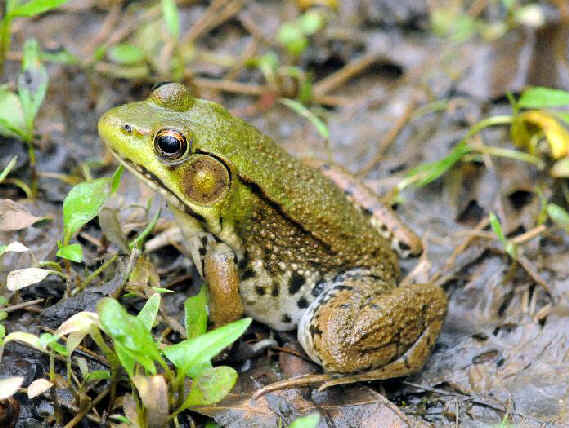
Above & below: Green Frogs
(upper photo by Howard Eskin, lower photo by Marie Gardner)
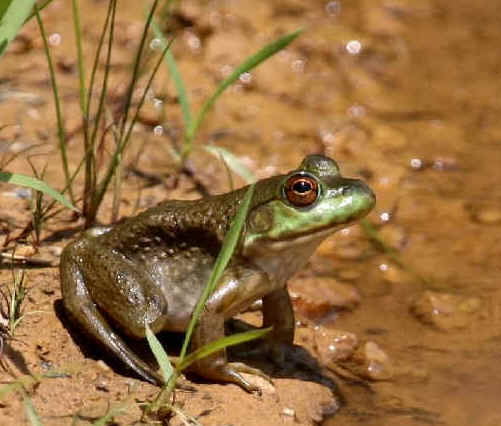
Below: a tadpole of the Green Frog (photo by Marie Gardner)
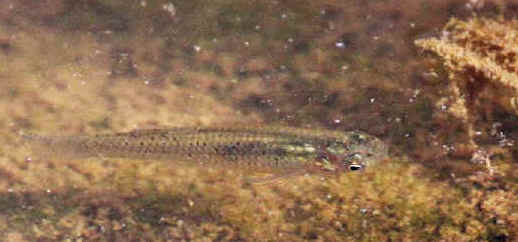
- American Bullfrog (ph) (*) ______
(LE:1) DE MD NC NJ
PA SC VA Size: 3 to 8 inches
Rana catesbeiana
The coloration and pattern of the American Bullfrog is
variable.
The dorsal color varies from bright leaf green to olive, olive-brown,
or brown.
The dorsal pattern varies with individuals that may include mottling
or marbles that are dark brown to black on the back and the sides of the
body.
The American Bullfrog may be heard, generally, in the northeastern US
from April to August. It avoids temporary bodies of water.
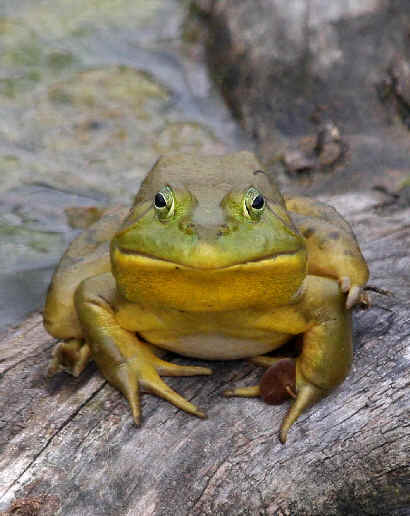
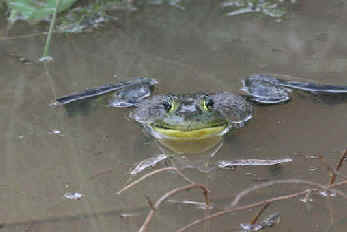
Above & below: American Bullfrogs
(top photo courtesy of Doris Potter; middle photo during a FONT
tour,
lower photo by Marie Gardner; see note above about color & pattern
variation)
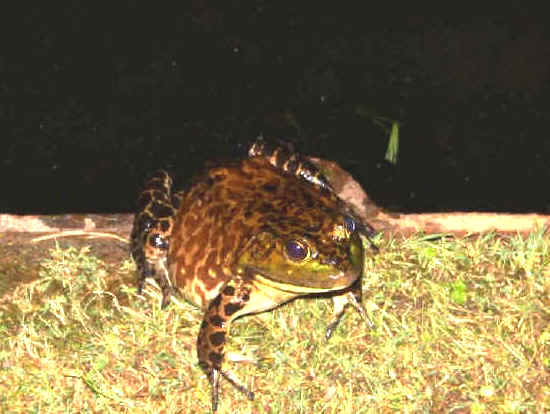
- River Frog ______
(LE:14) FL NC(south)
SC Size: 3 to 5.25 or 6 inches
Rana heckscheri
The River Frog occurs in the coastal plain from southeastern North
Carolina to northern Florida and west to southern Mississippi. It is
uncommon in much of its range.
Unlike the Gopher Frogs (below, in this list), the River
Frog generally does not call in choruses, and the calls of lone males (a
low, rumbling snore lasting from 1 to 3 seconds) are easily overlooked.
The breeding of Rana heckscheri
is from April or May through the summer.
- Pig Frog ______
(LE:2) FL
SC Size: 3 to 6.25 inches
Rana grylio
The Pig Frog is usually heard in offshore vegetation, sometimes while
floating in the water. Large choruses produce a steady roar. Heard from
April to August.
- Pickerel Frog (ph) (*) ______
(LE:11) DE MD NC NJ PA SC VA
Size: 1.25 to 3.5 inches
Rana palustris
The Pickerel Frog breeds in lakes, ponds, and streams. It also
occurs in grassy areas away from water. Males sometimes call while
submerged.
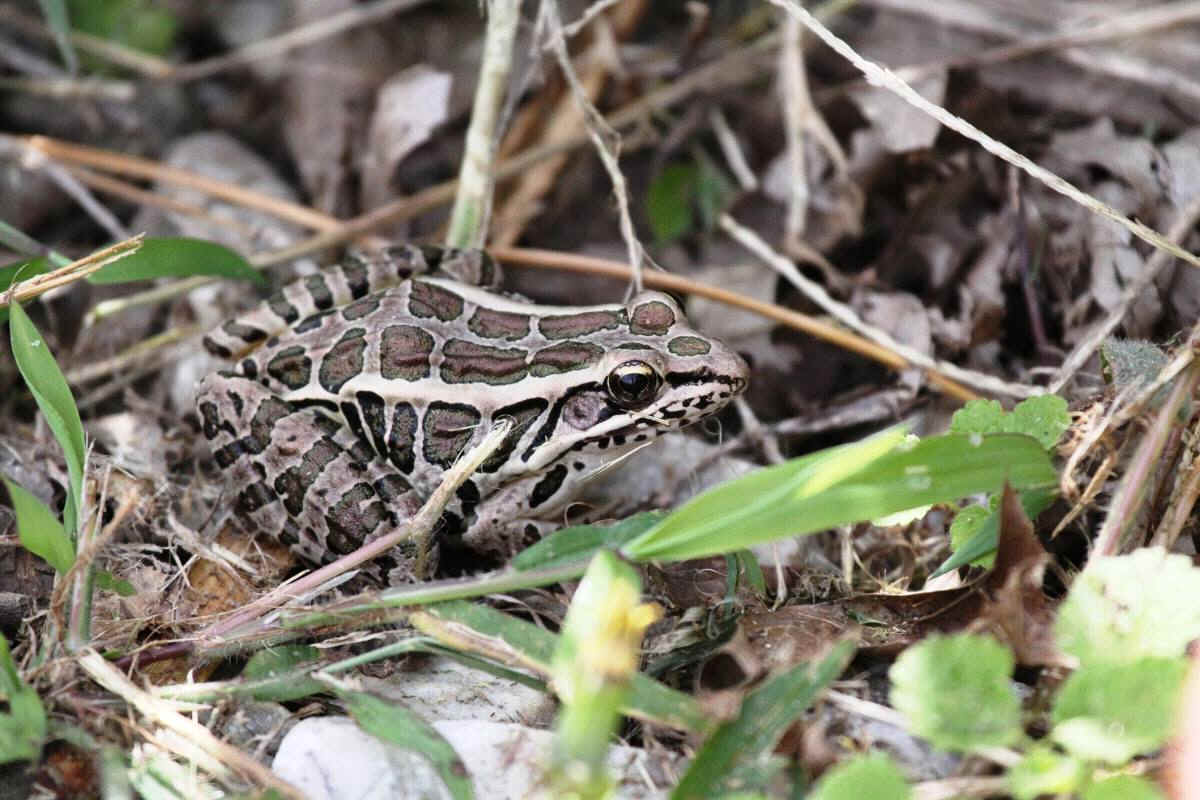
Pickerel Frog
(photo
by Marie Gardner)
- Carpenter Frog (*) ______
(LE:6) DE MD NC(east & south) NJ
SC VA(east) Size:
1.5 to 2.5 inches
Rana virgatipes
The Carpenter Frog is a southern species, restricted to regions of the
coastal plain from New Jersey to northeast Florida.
The name "Carpenter Frog" is because its advertisement call is a
distinctive series of sharp, double rapping notes, that sound like two
carpenters hammering nails slightly out of synch. It may be heard from
spring to late summer.
Rana virgatipes
is also called the Sphagnum Frog due to its close association
with sphagnum bogs. Otherwise, it can also be found at lakes and
ponds.
Rana virgatipes
is a species of special concern in New Jersey.
- Northern Leopard Frog (ph) ______
(LE:10) PA Size: 2 to 5 inches
Rana pipiens
The Northern Leopard Frog is a common spotted frog. It is also known
as the "Meadow Frog" due to its habit of visiting grassy
meadows and lawns.
Rana pipiens is an early spring
breeder that can be heard calling both day and night during the first warm
spells of spring.

Northern Leopard Frog
(photo by Doris Potter)
- Southern Leopard Frog (*) ______ (LE:9)
NC NJ
PA SC Size: generally 2 to 3.5 inches, but can
be up to 5 inches in length
Rana sphenocephala
Rana sphenocephala utricularia ______
DE
MD VA(east)
The Southern Leopard Frog often wanders away from water into
grassy and weedy places. In the northern part of its range, it breeds in the spring.
In the southern part of its range, it may be heard throughout the
year.
- Carolina Gopher Frog (*) ______
(LE:12) NC
Size: up to 4 inches long
Rana c. capito
Rano capito aesopus Florida Gopher Frog ______ FL
Rana capito is found in dry,
sandy habitats of the coastal plain from North Carolina to Mississippi. It
breeds in nearby ponds and swamps.
It is a nocturnal species, that is named for its habit of taking shelter
during the day in burrows of other animals, particularly the Gopher
Tortoise (later, in this list).
Large breeding choruses of Rana capito
are common.
- Mink Frog ______
(LE:5) Size: up to 3 inches long
Rana septentrionalis
The Mink Frog occurs from Minnesota to Maine, and
throughout much of eastern Canada. It is an aquatic species that breeds
during summer months in woodland ponds, lakes, and streams.
Its name of "Mink Frog" comes from the mink-like odor that
it gives off when handled.
- Wood Frog (*) ______
(LE:4)
DE
MD NC(west) NJ PA SC(very
local in northwest) VA(mostly west) Size:
1.5 to 3.25 inches
Rana sylvatica
The geographic range of the Wood Frog extends further
north than any other North American amphibian, as far as Labrador,
Canada.
Rana sylvatica can actually withstand the complete freezing of its
body.
Outside its breeding season, the Wood Frog is terrestrial, preferring
moist wooded areas.
On the Delmarva Peninsula, the Wood Frog is one of the earliest of
frog species to breed each year.
- Crawfish Frog ______ (LE:13)
NC
SC Size: 2.75 to 3.5 inches
Rana areolata
The Crawfish Frog favors moist pastures and meadows,
where it takes shelter during the day in crawfish burrows, or the burrows of
other animals.
Rana areolata
is classified as near, or potentially,
threatened in North Carolina.
- Florida Bog Frog ______
(LE:7) Size: grows to about 2 inches in length
Rana okaloosae
The Florida Bog Frog is a recently discovered species (described in 1985)
with a very restricted range.
It is found only in cool, clear freshwater seeps and boggy areas in the two
counties of Okaloosa and Santa Roca in the western panhandle of Florida.
Rana okaloosae is classified as vulnerable.
Family HYLIDAE
- Spring Peeper (*) ______
(LE:23) Size:
0.75 to 1.5 inches
Pseudacris crucifer (formerly Hyla crucifer)
Pseudacris crucifer crucifer Northern Spring Peeper
______ DE MD NC NJ PA
SC VA
Pseudacris crucifer bartramiana Southern Spring Peeper
______ FL
range is in northern Florida and southern Georgia
Some other names of the Spring Peeper are:
"Pink-winks" along Nova Scotia's south shore
"Pinkletinks" on Martha's Vineyard, Massachusetts
"Tinklewinks" in New Brunswick, Canada
The Spring Peeper breeds in pools, ditches, and ponds. Not often seen
outside the breeding season when it looks for insects in trees and shrubs,
and on the ground.
Pseudacris crucifer has a
"rain call" given periodically in the summer and autumn, from
trees and shrubs, that is a repeated series of peeps or squeaks that are
harsher and more dissonant than its call in the spring, hence the nickname "Autumn
Piper".


 Amphibians
Amphibians








